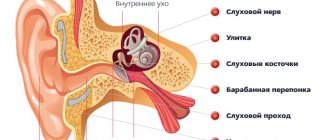Speech organs and their mechanisms
Generated by the needs of social life, our speech is carried out by an extremely complex anatomical and physiological apparatus, consisting of central and peripheral speech organs . The central organ consists of the brain, mainly the cortex of its cerebral hemispheres. The peripheral organs include the organs of hearing, breathing, voice, and articulation. Inextricably linked and interacting under the leading regulatory influence of the central nervous system, all speech organs represent a complex functional system in which each of them plays its own specific role. Violation of one of them affects the activities of the others.
The central organ of speech and its mechanisms
The cerebral cortex, in turn, is a complex functional system of interacting various analyzers (auditory, motor, visual, etc.). The cortex carries out the physiological basis of speech - the second signaling system, inextricably linked and interacting with the first signaling system.
I.P. Pavlov, by the second signaling system, meant not only speech as a means of communication, but associated it with the ability to generalize, abstract, with “specially human higher thinking.” Consequently, the cortex is the central organ of speech that regulates others. This is proven by the possibility in some cases, with a healthy brain, to learn to speak without hearing and voice, to write without hands: the brain can adapt other organs for speech. The brain acts holistically in any act, as a single functional system. Therefore, speech is the result of the holistic work of the entire brain.
In the cortex, under the influence of speech stimuli from the environment and depending on the state of the nerve cells at any given moment, temporary nerve connections can be formed in any part of it. As a result of processing the latter by higher analysis and synthesis associated with certain structures (constructions) of the brain, conditioned second-signal (speech) reflexes arise. The localization of speech functions of the cortex is not only very complex, but also variable, which is why it was named I.P. Pavlov dynamic localization. Speech reflexes are acquired by a child individually through life experience, arise as a result of the simultaneous complex activity of auditory, visual, motor, kinesthetic, skin and vibration analyzers and are expressed in the form of speech sounds, syllables, words and phrases. As a result of long-term repeated influences in the same sequence of a certain group of speech stimuli, a relatively stable complex of conditioned reflexes (sounds, words, phrases) is formed in the brain, which is resumed when the complex stimulus is repeated, in whole or in part. Such a complex is carried out by the corresponding temporary connection of nerve cells, forming continuously changing “constellations”. This coherent, balanced system of internal processes by I.P. Pavlov calls it a dynamic stereotype. Human stereotypes are qualitatively more complex than animal stereotypes. They are the result of both the specific patterns of the second signaling system and its effects on the first signaling system.
Peripheral speech organs
The executive devices of sound speech, the activity of which is regulated by the brain, are: 1) the organs of hearing that perceive and control speech, and partly of vision; 2) sound-producing organs: respiratory muscles of the abdomen and chest, diaphragm, lungs, larynx, soft palate with uvula, oral and nasal cavities, tongue, teeth and lips (Fig. 1).
In pronunciation, an important role is played by the sense of movement of the organs that produce sound (especially the tongue), and to some extent, touch. The more often and better these organs work, the more the brain itself develops under the influence of the stimuli coming from them and controls them more accurately.
Particularly noteworthy is the extraordinary role of hearing in auditory speech: a child deprived of hearing from an early age, without special training, cannot imitate the speech of adults and therefore remains mute, but for communication uses a primitive means - gesture and facial expressions. What kind of peripheral speech organs does a person have?
1. Breathing apparatus (Fig. 1 and 2). a) Lungs, which are like bellows, filled with air and consisting of individual elastic communicating vesicles (alveoli). The lungs supply the larynx, mouth and nose with a stream of air necessary for sound pronunciation. b) The chest, to the walls of which the lungs are tightly adjacent. By contracting the strong external intercostal muscles, it expands and stretches the lungs (during inhalation); due to the heaviness of its walls, the elasticity of the lungs, and partly the contraction of the weaker internal intercostal muscles, it collapses and compresses the lungs (during exhalation). c) The diaphragm is a powerful flat muscle that separates the chest cavity from the abdominal cavity. When contracting, it becomes denser and, falling down, frees up space for the lungs and thereby increases their capacity (inhalation); sticking out with two domes upward and pressing on the bases of the lungs, displaces air from them (exhalation). d) The abdominal muscles, when contracting, press on the intestines and through it on the diaphragm - promote exhalation; protruding forward during intense inhalation, they facilitate the lowering of the diaphragm during inhalation.
Breathing carried out by movements of the chest is called thoracic; produced with the help of the diaphragm and abdominal muscles - diaphragmatic, or abdominal. Children use a combined thoraco-abdominal type of breathing, which is most beneficial for speech and healthy (as it is the easiest, most economical, smoothest and richest in the amount of exhaled air). Some children experience upper thoracic or clavicular breathing (with it, the shoulders are raised, and the air enters mainly the tops of the lungs). This type of breathing is harmful to health, and children should be weaned from it.
Inhalation requires much more effort than exhalation, during which the chest collapses under the influence of its own gravity, and the lungs themselves tend to contract. This must be remembered during all kinds of games and exercises for developing breathing.
2. Larynx (Fig. 3, 4, 5). This vocal apparatus is a small box consisting of a whole system of large and small cartilages, movably articulated with one another and driven by a system of muscles. Its main part is the vocal cords - two elastic muscle folds that protrude in the form of rollers from the inner walls of the thyroid cartilages. In front, the cartilages converge at an acute angle (Adam's apple). At the back, the ligaments are attached to two movable cartilages, which, converging and diverging, sometimes push them apart, sometimes close them (the glottis opens and closes). In addition, the vocal cords, contracting, can themselves move closer to one another. Other muscles of the larynx are also involved in the movement of the ligaments.
During normal breathing, the glottis is open and air passes through it freely. This is how the voice is formed. A stream of air coming from the lungs encounters the closed vocal cords and with force, in small jolts, breaks through between them.
Rice. 3. Internal view of the anterior part of the larynx. 1 - thyroid cartilage; 2 - cricoid cartilage; 3 - epiglottis; 4 - section of the hyoid bone; 5 - trachea; 6 - blinking ventricle; 7 - false vocal cord; 8 - true vocal cord.
Under air pressure, the ligaments rhythmically oscillate (vibrate) - a musical sound is obtained, which is called the primary tone. These vibrations in turn cause vibrations in all cavities communicating with the laryngeal cavity (subglottic and supraglottic space - pharynx, mouth, nose, etc.). And in them the main tone for each speech sound and additional tones (overtones) are formed, which, merging with the main tone, form the sound of the human voice that we hear. The action of the larynx is similar to the action of a reed organ pipe (Fig. 5): the reeds, under the influence of a stream of air and springs, quickly and rhythmically close and open, resulting in a sound.
The stronger the air pressure on the vocal cords (the resulting large range of vibrations), the larger the resonating cavities, the stronger the voice. The pitch of the voice depends on the number of vibrations of the vocal cords per second. The larger the larynx, the longer the vocal cords and, therefore, the less vibration, and therefore the lower the pitch of the voice. Children have shorter vocal cords than adults, so children's voices are higher than adults' voices.
Depending on the ratio of the time of the exhalation stream of air and the rapprochement of the vocal cords, three types of voice formation, or attack (attack, vocal beginning) are distinguished: hard, soft and aspirated.
A hard attack is more often observed when negative emotions (anger, malice, irritation) are expressed in the voice. A hard attack occurs because the air approaches the vocal cords at the moment when they have time to tensely come together. When air breaks through them, a sharp, strained beginning of a voice is heard, for example: “Oh, how painful!” or irritably: “Olya, sit on the chair.” Screaming and speaking tensely, irritably, and swearing is harmful to the voice. A mild attack is formed by the gradual rapprochement of the ligaments already at the moment of air passage - a pleasant, soft voice is heard. For example: “Oh, what a beautiful flower!”, “Olya, kiss me.”
Rice. 4. Top view of the larynx: glottis a - open glottis during breathing; b - when a voice sounds; c - when whispering; g - with falsetto.
An aspirated attack is caused by the passage of air before the vocal cords begin to approach each other, so a slight exhalation is heard before the voice, like the German sound p.
3. Extension pipe (Fig. 1, 6). It consists of a number of different cavities (pharynx, nasopharynx, nose, mouth) and organs of articulation (soft palate, hard palate, tongue, teeth, jaws, lips) associated with the larynx and located above it. The extension pipe gives the sound a certain color (timbre) and shape.
Rice. 6. Oral cavity: 1 - soft palate; 2 - tongue; 3 - palatine tonsils; 4 - tongue; 5 - palatopharyngeal arches; 6 - palatine-lingual arches; 7 - posterior wall of the pharynx; 8 - hard palate.
a) The pharynx is a wide canal from the base of the skull to the esophagus, its part in front of the palate is called the nasopharynx; The space between the soft palate and the root of the tongue is called the pharynx. These cavities, being the expanded end of the respiratory tube, facilitate inhalation: air passes through the pharynx into the mouth, through two openings (choanae) into the nose and into the tympanic cavity of the ear (from the pharynx through the Eustachian tube). b) The soft palate is a muscular continuation of the hard palate, ending in a uvula. If necessary, straining, it rises upward and, pressing together with the tongue against the back wall of the throat, closes the air passage into the nose. c) The hard palate is a bony dome-shaped arch that enhances the sound of the voice. d) Teeth and jaws strengthen the voice and clarify (especially the incisors) the pronunciation of sounds. With normal jaws and teeth, the upper teeth somewhat overlap (capture) the lower teeth, tightly closing with them. It is impossible to push the lower jaw forward when making the sounds ы, Ж, ч, Ш, щ, which is observed in practice. e) Lips, giving various shapes to the mouth opening, thereby modify sounds. f) The tongue is the main organ of sound production. It is a complex complex of many muscles located and acting in different directions and directly connected with other organs of pronunciation. Thanks to its great flexibility and mobility, changing its position and shape, it changes the oral cavity in various ways, forming a narrowing in it, then closing with different parts of it, and to a certain extent affects the function of the vocal and respiratory organs. As a result of such plasticity of the language, a rich complex of various speech sounds is created. g) The nose is a rather large cavity, divided by a longitudinal plate (vomer) into two chambers, which amplifies the voice and gives it a special timbre when the vocal respiratory stream passes through the nose. 4. Ear (Fig. 7)
Rice. 7. Structure of the ear: 1 - external auditory canal; 2 - eardrum; 3 - middle ear cavity; 4 - hammer; 5 - anvil; 6 - stirrup, resting on the oval membranous window; 7 - semicircular canals; 8 - vestibule; 9 and 10 - snail; 11 — round window; 12 - Eustachian tube; 13 — bone in section.
The organ of hearing, the ear, consists of three sections: external, middle and internal. The sound wave reaches the eardrum through the ear canal and causes it to vibrate, which is transmitted to the movably articulated auditory ossicles (hammer, incus and stapes) located in the middle ear. The middle ear is filled with air that enters it from the mouth through the Eustachian tube. Vibrations of the auditory bone chain, which at the other end is attached to the elastic membrane separating the middle ear from the inner ear, together with air vibrations are transmitted to the inner ear, filled with a special liquid. In the inner ear, in addition to the apparatus for maintaining balance (the semicircular canals), there is the auditory cochlear apparatus, which houses the very thin and complex organ of Corti. It contains special auditory cells with hairs connected to the auditory nerve. The vibrations propagated through the liquid irritate the hairs of the auditory cells. These irritations are transmitted along the auditory nerve to the brain, where we are aware of them as speech sounds.
Khvattsev I. Yu.
Need a consultation with a neurologist? Sign up by phone or through the feedback form in the “Contacts” section.
Signs that distinguish vowel sounds from consonants
1. The main difference between vowels and consonants is their role in syllable formation. A vowel sound always forms the top of a syllable and is a sonant; a consonant accompanies a sonant and is a consonant. 2. The articulatory difference between vowels and consonants consists of different tensions of the pronunciation apparatus and the absence or presence of a focus of formation. 3. During the formation of vowels, the voice dominates over noise, while during the formation of most consonants (with the exception of sonorants), the relationship is the opposite: noise dominates over the voice. The presence of two types of speech sounds (vowels and consonants), differing in articulation, forces a classification of vowels to be made separately from the classification of consonants.







